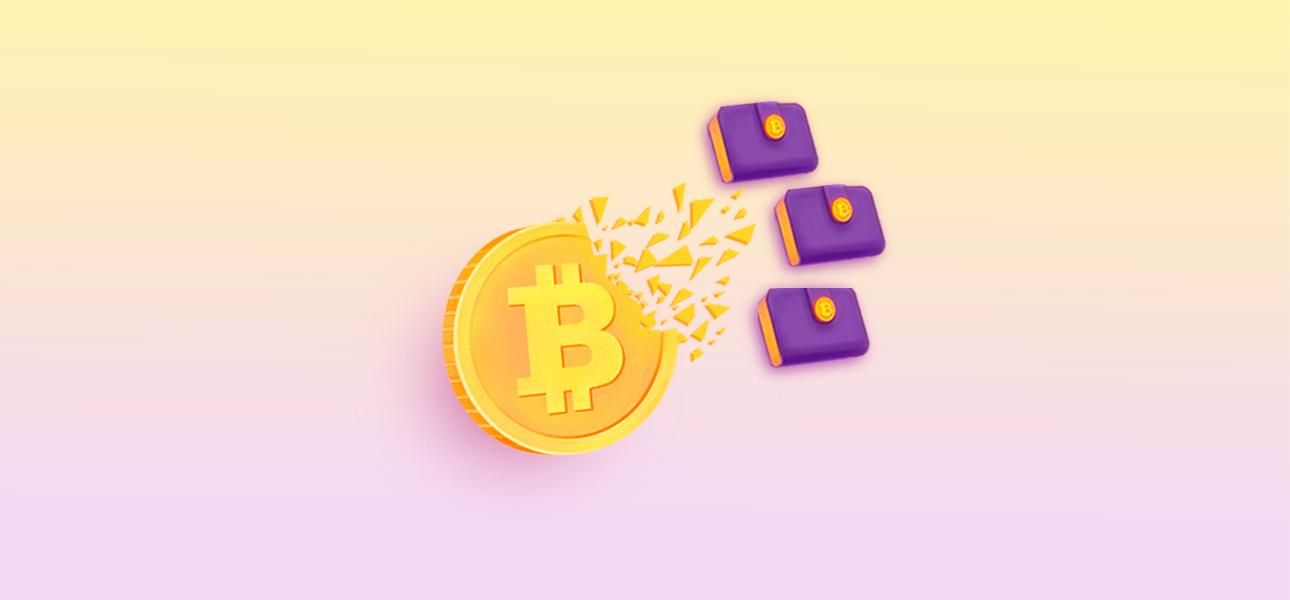
What is a Crypto Dusting Attack?
"Dust attacks" constitute a new type of malicious activity where hackers and scammers aim to extract confidential information from Bitcoin and other cryptocurrency users by sending minuscule amounts of coins to their private wallets.
Many Bitcoin experts operate under the assumption that their anonymity is well-protected from attempts to infiltrate their transactions, but unfortunately, this is not the case. In this article, we will try to shed light on the intricacies of this threat and arm readers with knowledge of this phenomenon.
Table of content
- Understanding the basics of crypto dust
- How dust transactions work
- Can dusting attacks steal crypto?
- How to identify crypto dust attacks?
- How to prevent dusting attacks?
Understanding the Basics of Crypto Dust
In crypto, "dust" denotes a minuscule amount of coins or tokens, so trivial that they are often overlooked. To illustrate, let's use Bitcoin. Its smallest unit is a "satoshi" (0.00000001 BTC), and even a few hundred satoshis may be considered "dust".
Simply put, dust represents a transaction or a sum that is too meager to be worth transferring due to the transaction fee exceeding the amount itself.
"Dust attacks" is a term coined when malicious actors noticed Bitcoin users' indifference towards the small quantities of coins in their wallets. These scammers started distributing dust across numerous addresses, each receiving a handful of satoshis. Subsequently, they monitored these funds and transactions from the dust-filled wallets. This allowed them to link the addresses and potentially unmask the organizations or individuals behind them. The acquired knowledge could then be weaponized for targeted phishing attacks or blackmailing users into paying to maintain their anonymity. Initially, dusting crypto attacks were predominantly conducted using Bitcoin, but have since branched out to other cryptocurrencies that operate on a transparent, public blockchain.
In late 2018, Samourai, a Bitcoin wallet developer, announced that some of their users had fallen victim to dust attacks. They issued a tweet alerting their users and provided instructions on how to guard themselves. The wallet now includes a real-time alert to monitor dust and a "Do Not Spend" function. This allows users to flag suspicious funds, preventing their use in future transactions. By halting the spread of dust, attackers are unable to draw the links necessary to de-anonymize the wallet or address owners. The Samourai wallet also has a feature that automatically flags transactions below 546 satoshis, offering an extra layer of protection. The software autonomously adjusts this limit to mirror current market conditions.
How Dust Transactions Work
Given the inherent transparency and traceability of blockchains, it's feasible to track transaction activity, potentially leading to the identification of wallet owners. For a crypto dust attack to succeed, the wallet owner must unwittingly mix the dust with other funds in the same wallet and use it in further transactions.
By unintentionally integrating a small amount of cryptocurrency (the dust) into other transactions, the individual targeted by the attack may unknowingly send the dust to an off-blockchain centralized entity. Since such centralized platforms must adhere to Know Your Customer (KYC) regulations, they store the victim's personal data. This makes the victim susceptible to off-blockchain threats, such as phishing, cyber extortion, blackmail, and other targeted hacking attempts to steal cryptocurrencies.
Can Dusting Attacks Steal Crypto?
Dusting attacks themselves don't directly steal cryptocurrency from users' wallets. Rather, these attacks are a method used to break the privacy of users. The main goal of a dusting attack is to de-anonymize the individual or entity behind a particular blockchain address.
Here's how it works: attackers send small "dust" amounts of cryptocurrency to a large number of addresses, then analyze those addresses' transactional activity in the hope that the "dust" will be moved along with the users' main funds. This can help them to identify which addresses belong to a single wallet, breaking the privacy of the users and potentially linking them to their real-world identities.
Once attackers have successfully de-anonymized an address, they can exploit this information in various ways. For instance, they can launch phishing attacks, use the information for ransom demands, or sell the personal information.
How to Identify Crypto Dust Attacks?
Identifying a dusting crypto attack can be somewhat challenging, especially for less experienced cryptocurrency users. However, knowing what to look for can significantly enhance your protection against this form of cyber threat.
- Small amounts of unrequested crypto: a hallmark sign of a dusting attack is receiving small, seemingly random amounts of cryptocurrency that you did not request or expect.
- Unexpected transactions: regularly review your transaction history.
- Increase in spam: dusting attacks are often followed by an increase in spam, particularly phishing attempts.
- Wallet software alerts: some modern wallet software and crypto exchanges have built-in features to detect and alert you to potential dusting attacks.
If you believe you're a victim of a dusting attack, avoid moving the dust along with your other coins.
How to Prevent Dusting Attacks?
While completely avoiding dusting attacks may not be possible given their nature, there are some precautions users can take to minimize their impact:
- Do not consolidate crypto dust: if you notice a tiny amount of cryptocurrency (the "dust") deposited into your wallet that you don't recognize, don't spend it together with your other funds. This could allow attackers to track your transactions.
- Opt for a wallet that offers coin control functionality: using coin control, you can avoid incorporating insignificant amounts of cryptocurrency, commonly known as "dust," into your transactions.
- Leverage privacy-enhancing tools: Some wallets and cryptocurrencies offer advanced privacy tools.
- Stay informed: the cryptocurrency landscape is constantly evolving, and so too are the threats that users face.
Remember, while dusting crypto attacks aim to compromise your privacy rather than steal your crypto directly, they can still lead to serious security breaches if not handled correctly. Stay vigilant, and take the necessary steps to protect your privacy.
► Sabai Academy — a place where studying blockchain, crypto, fractional ownership, and real estate investments becomes a catalyst for capital growth!
Sabai Academy
BOOST your knowledge with our FREE crypto courses!
Related Articles

When to Avoid Investing in Resort Real Estate?

What is Cryptocurrency, and Why Do We Need It?

